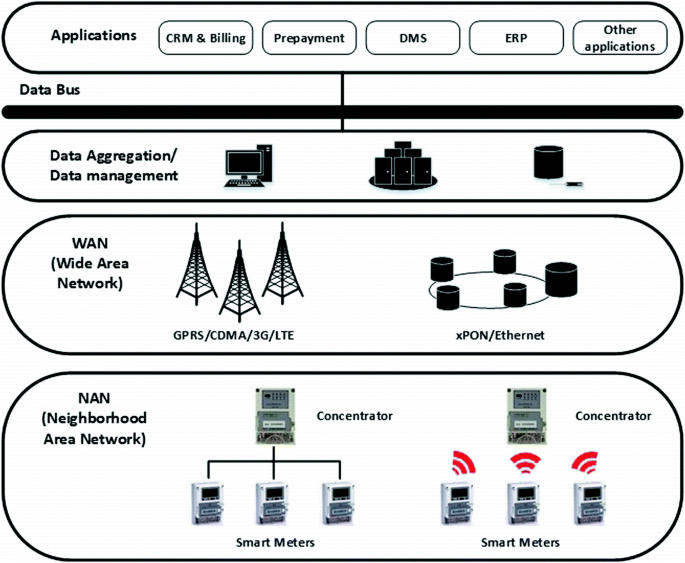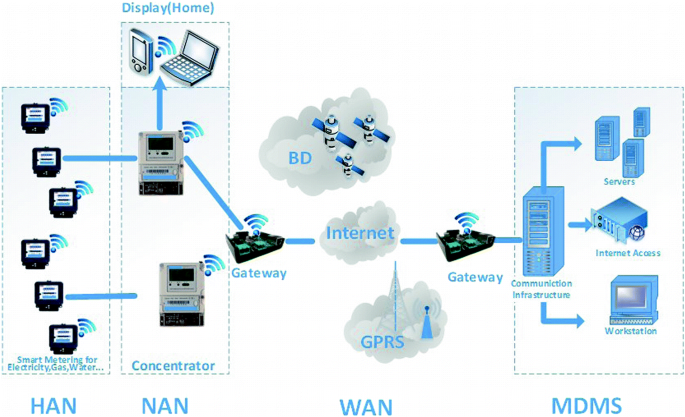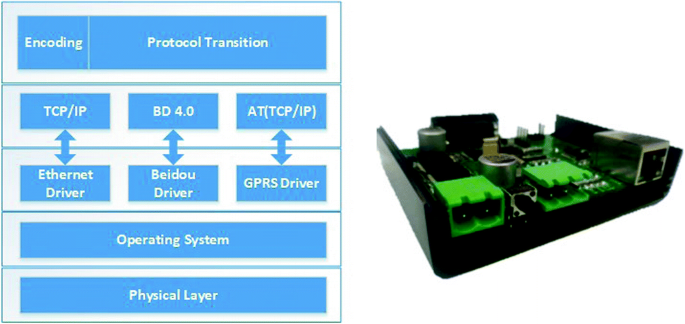Abstract
The smart grid (SG) is an intelligent evolution of the electricity network that depends on highly reliable and secure connectivity between various infrastructure components from utilities, in order to meet the requirements of smart metering communication. Machine-to-machine (M2M) technology is designed for automatic equipment when it exchanges data, which is suitable for SG; Wireless communication is a main mode of M2M, and satellite communication provides support for the coverage of SG communication network. In this paper, an overview of the satellite-based M2M service for the smart grid is provided, and a case system is discussed with Beidou-based M2M service for smart grid.
Access provided by Autonomous University of Puebla. Download conference paper PDF
Similar content being viewed by others
Keywords
1 Introduction
At present, the communication infrastructure of smart grid includes wired and wireless. Wireline-based solutions have available and developing, but wireless communication technologies will become increasingly important, especially in rural environments, scenes that need long-distance communication. All of that can greatly benefit from wireless or satellite-based system for the smart grid. Wireless automatic meter reading is of particular interest to utilities for both urban and suburban environments [1].
M2M has been applied more and more in smart grid [2,3,4,5]. M2M communication happens between machines, this practice often ignores direct manual intervention. Smart grid provides conditions for devices that require large numbers of automated operations.
Advanced Metering Infrastructure (AMI) is a significant component of the SG, designed to be Demand Response-enabled [6], the two-way communication between power companies and consumers enable consumers to monitor and adjust the use of energy as well. Figure 1 shows a schematic diagram of typical AMI architecture, it contains four components: Meter Database Management system (MDMS), Neighborhood Area Network (NAN), Wide Area Network (WAN), and Home Area Network (HAN). Increasingly, companies are planning to launch intelligent metering services by incorporating M2M devices in the meters.
In our proposed model, we focus on a case study of the satellite-based M2M service for smart grid: Beidou-based M2M service for the smart grid. Section 2 introduces the development and application of the satellite-based M2M service; Sect. 3 discusses the present situation of Beidou-based M2M service for smart grid, and our model.
2 The Satellite-Based M2M Service
The satellite-based M2M service provided connectivity over large areas. Since terrestrial networks may not service all locations on earth, satellite operators, low earth orbit satellites such as Iridium, Mid orbit satellites such as Inmarsat, and Beidou offer global connectivity services that can extend M2M communication to almost 100% of the earth. Hence, the delivery of relatively small quantities of data in almost all cases is supported by the satellite-based M2M service [1].
Over the past decade, M2M communication through satellite communications, especially with the development of satellite networks, have played an important role in many fields. A typical application is the sensor network [8], M2M sensor devices are grouped into clusters and communicate with satellite gateways. The characteristics of M2M communication system are a large number of equipment, low data rate, and large coverage area, which fits the demand of the smart grid. The satellite-based M2M service in the smart grid is similar to the satellite-based M2M sensor network, and the smart meter (concentrator) is grouped into clusters in the local and communicate with satellite gateway. It is a workable scheme to collect electrical information from the Beidou short message. At the end of 2012, the system was formally put into operation in the three functions in the Asia Pacific region, including Navigation and Position, Time Giving, and Short Message. The Beidou satellite communication system has a wide range of coverage, no communication blind district and enciphering of message [7].
Therefore, we take the application of M2M service in smart grid based on Beidou satellite as a case.
3 Case: The Beidou-Based M2M Service
3.1 Demands for SG and Characteristics of BD
Beidou satellite communication has its limitations, so it needs to be perfect for the relevant measures to meet the needs of smart grid. The characteristics of Beidou (BD) satellite communication and the demand for smart grid communication are shown in Table 1.
From the table, Beidou satellite communication system cannot meet all the needs of smart grid communication, we need to make some changes.
3.2 System Architecture
We need to make some improvements when Beidou satellite communication is added to WAN in the AMI system. As seen in Fig. 2, the addition of a gateway between MDMS and WAN, between WAN and NAN, can ensure that the original network can be changed as little as possible, and solve the existing problems properly. The ARQ coding scheme can be used to solve the problem that the Beidou satellite communication cannot guarantee reliable transmission in the transmission of power data into the communication network; The long message segmentation method can be used for the problem of the lack of the capacity of the Beidou satellite communication, it breaks data into packets in this end and combines incoming message into a single message in other end; On the response speed problem, we use gateway to response the end, the new response strategy is specified between the gateway, the gateway converts the protocol as well.
But even so, the time needed to send a longer message is still too long, so the longer message can be compressed first, such as LZ77, which can reduce the length of the message to be sent, which will reduce the time cost.
The gateway structure is shown in Fig. 3. The physical layer provides physical access for connection; the operating system loads the related drivers, following the corresponding protocol; encoding (long message enhancement, ARQ coding, LZ77 coding, etc.) and protocol conversion happen in the application layer.
4 Conclusion
We summarize the effect of M2M and satellite communication in smart grid, which is demand-focused communication network. The satellite-based M2M service has a good prospect in many fields. More and more studies have begun to be attempted in smart grid for characteristics of this system. The Beidou satellite communication is running well in the Asia Pacific region and has been widely used. Therefore, the Beidou-based M2M service is taken as a case to solve the problems, which exists in the fusion process of the satellite-based M2M service for smart grid.
References
Sohraby, K., Minoli, D., Occhiogrosso, B., et al.: A review of wireless and satellite based M2M/IoT services in support of smart grids. Mob. Netw. Appl. 4, 1–15 (2017)
Wietfeld, C., Georg, H., Groening, S., et al.: Wireless M2M communication networks for smart grid applications. In: Wireless Conference 2011–Sustainable Wireless Technologies, VDE, pp. 1–7 (2011)
Minoli, D.: Innovations in Satellite Communication and Satellite Technology: The Industry Implications of DVB-S2X, High Throughput Satellites, Ultra HD, M2M, and IP. Wiley (2015)
Kumar, Y.A., Sachin, T.: A tree based multicast routing protocol using reliable neighbor node for wireless mobile ad-hoc networks. In: Proceedings of the 4th International Conference on Frontiers in Intelligent Computing: Theory and Applications (FICTA) 2015. Springer, India (2016)
Helfert, M., Krempels, K.H., Klein, C., et al.: Smart cities, green technologies, and intelligent transport systems. Commun. Comput. Inf. Sci. (2015)
Lakhtaria, K.I.: Next Generation Wireless Network Security and Privacy (2015)
Beidou Satellite Navigation System. http://www.beidou.gov.cn/
Vassaki, S., et al.: Satellite-based sensor networks: M2M sensor communications and connectivity analysis. In: International Conference on Telecommunications and Multimedia, pp. 132–137, IEEE (2014)
Acknowledgements
This work was supported by State Key Laboratory of Smart Grid Protection and Control of NARI Group Corporation, and the Postgraduate Research and Practice Innovation Program of Jiangsu Province (SJCX18_0004).
Author information
Authors and Affiliations
Corresponding author
Editor information
Editors and Affiliations
Rights and permissions
Copyright information
© 2019 Springer Nature Singapore Pte Ltd.
About this paper
Cite this paper
Jiang, N., Yang, C., Guo, X., Zhang, Z., Wang, J. (2019). The Satellite-Based M2M Services for Smart Grids: Case Study. In: Liang, Q., Liu, X., Na, Z., Wang, W., Mu, J., Zhang, B. (eds) Communications, Signal Processing, and Systems. CSPS 2018. Lecture Notes in Electrical Engineering, vol 515. Springer, Singapore. https://doi.org/10.1007/978-981-13-6264-4_104
Download citation
DOI: https://doi.org/10.1007/978-981-13-6264-4_104
Published:
Publisher Name: Springer, Singapore
Print ISBN: 978-981-13-6263-7
Online ISBN: 978-981-13-6264-4
eBook Packages: EngineeringEngineering (R0)







